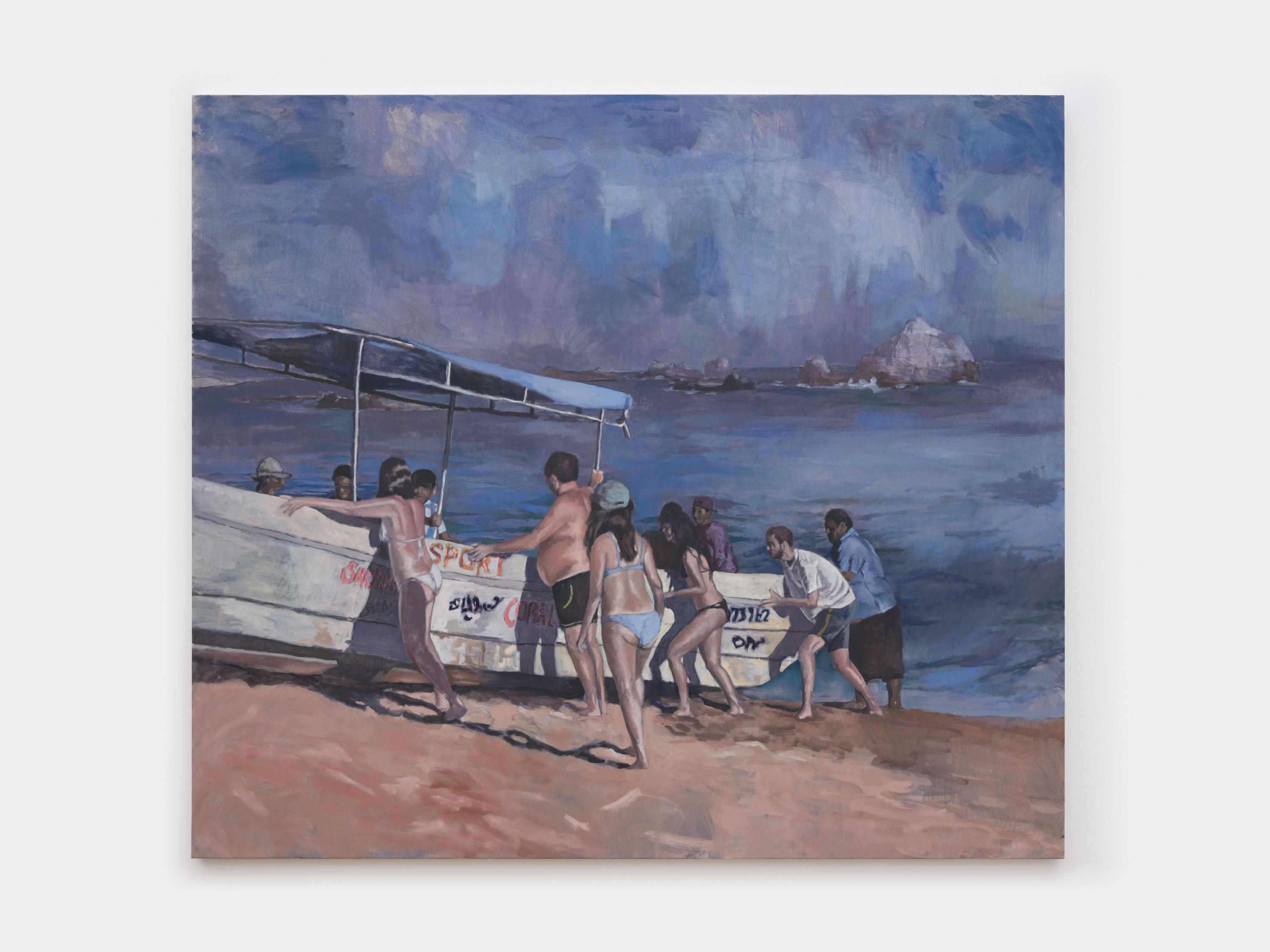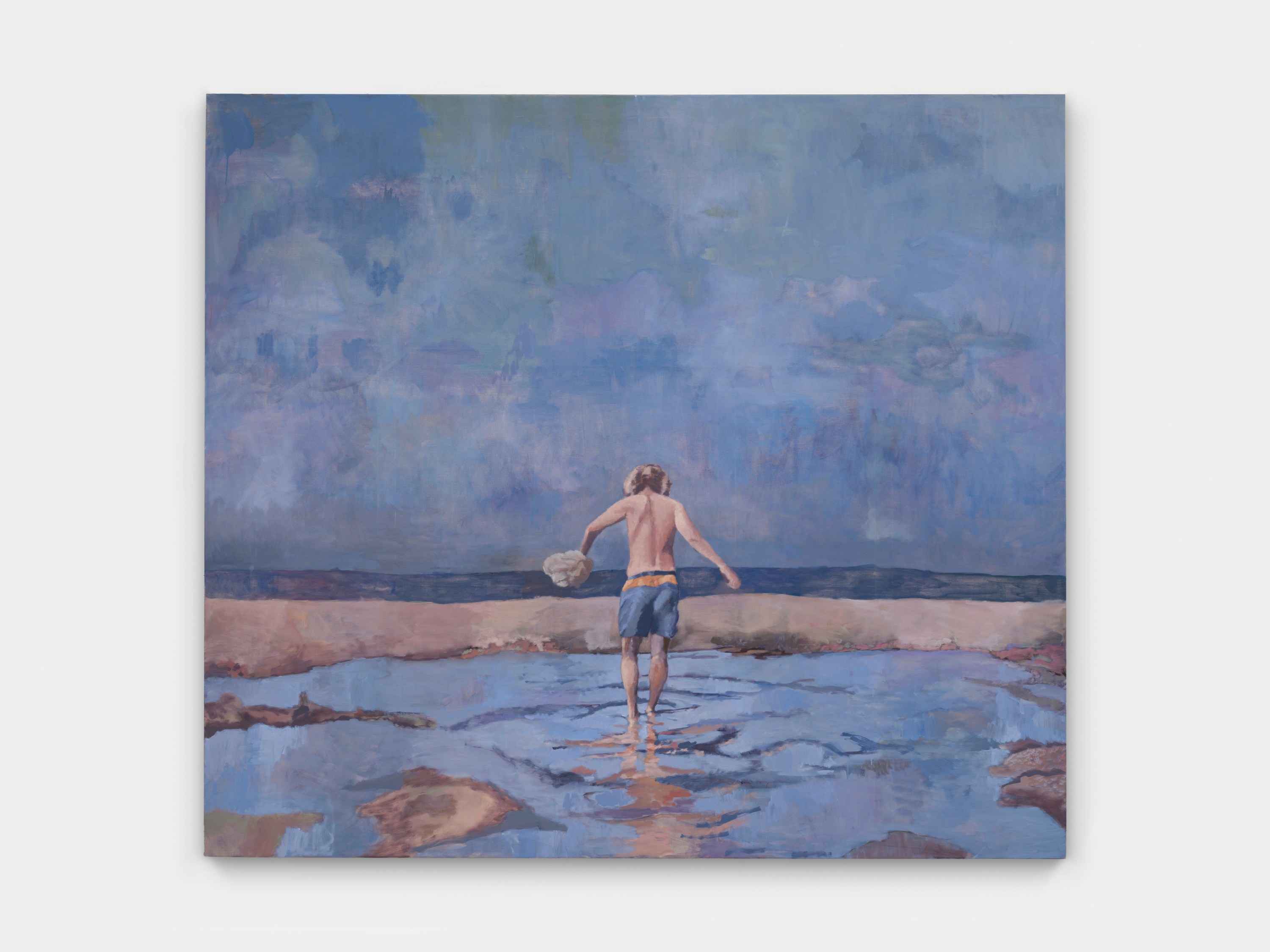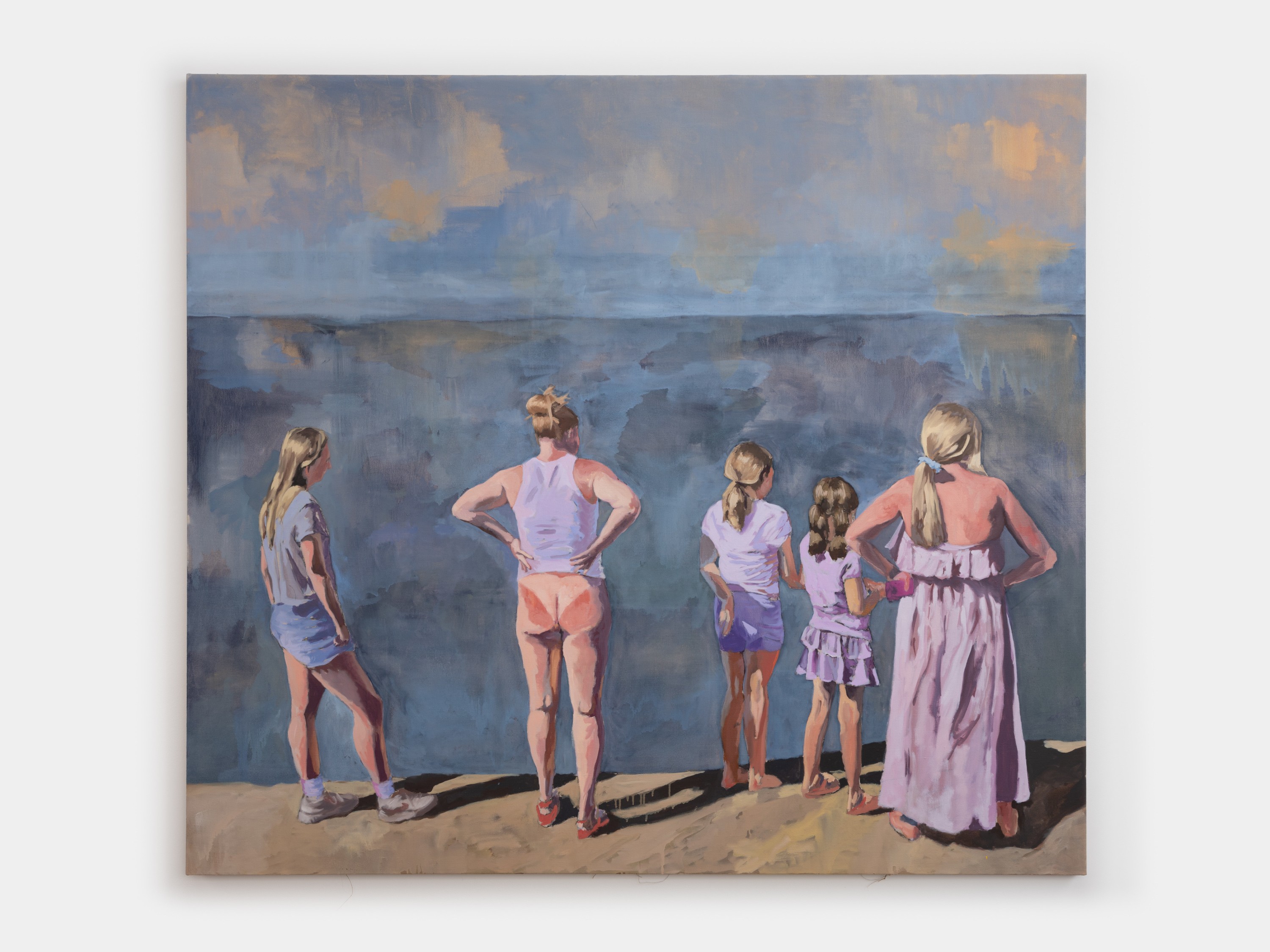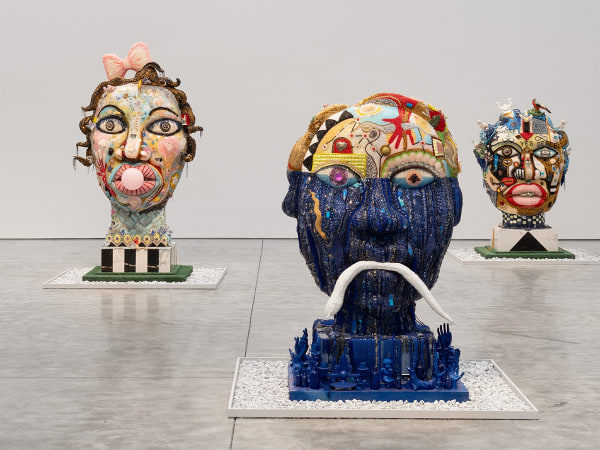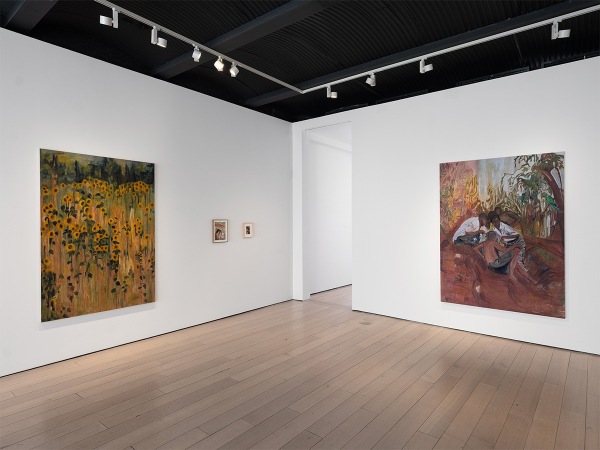Emil Sands: Salt in the throat
-
-
Kasmin announces its first solo exhibition of work by New York-based painter Emil Sands (b. 1998, London). For his debut exhibition in Chelsea, Sands explores shifting codes of human behavior and the influence of the surrounding world in a suite of new paintings. In the open air of a seascape or the shadows of a dense forest, Sands’ settings act as stage sets in which his cast of characters perform, reading one another's subtle gestures. As he exaggerates these figures and invites viewers to extrapolate on their relationships, Sands' considered brushwork and intuitive use of color combine to construct narratives filled with sensitivity and pathos.
In Salt in the throat, Sands' impressionistic tableaux blur the boundary between portraiture and landscape, delighting in the beauty and potency of expansive scenery. With their bodies exposed to the outdoors, the painter’s subjects engage in quiet exploration, contemplation, and play. Occasionally, they present themselves assertively as a knowing recipient of another’s gaze. Gestures find repetition—a bent elbow or a hand on a hip call to mind the striking stance of Cézanne’s The Bather (c. 1885, MoMA). Several stand in relaxed contrapposto, a pose of classical sculpture that Sands invokes even as he disregards the conventions of idealized bodies, using partial nudity to exaggerate eccentricities in their appearances. While the works may reveal a voyeuristic impulse in their viewers, the subjects’ unassuming poses resist a sexual charge, serving only to emphasize Sands’ inquiry into the human body.
-
 Emil SandsThe tourists, 2024oil on linen70 x 80 inches
Emil SandsThe tourists, 2024oil on linen70 x 80 inches
177.8 x 203.2 cm -

-

-
The exhibition title borrows from Sylvia Plath’s disorienting poem “Berck-Plage” (1962), noted for its uncanny use of metaphor to explore the cycle of human life. Just as those in Plath’s poem ambiguously straddle perceptions of innocence and mischievousness, Sands’ subjects appear variously at ease and in tension with the environment. In The invitation (2024), four young men find an oasis in a river setting, free to move and play in the paradise of open air. Three of the men leisurely tilt their heads downward to gaze at the water swallowing their feet. The fourth faces the viewer with an expression both inviting and cautionary. His guarded stance creates distance around the scene, highlighting exclusion as a contingency of intimacy.
-
-
 Emil SandsTide pool crab land, 2024oil on linen80 x 90 inches
Emil SandsTide pool crab land, 2024oil on linen80 x 90 inches
203.2 x 228.6 cm -
Sands constructs these compositions from the perspective of an outsider—one who may be welcomed, but whose invitation is not guaranteed. Drawing on his experience of living with cerebral palsy, the artist reflects on the ways that a limitation in one’s physical movement can impose the role of observer. His work argues for painting’s ability to positively exploit this imposition and invokes its capacity to revise strained personal memories of the outdoors with a charged sense of freedom. The sky, emblematic of such possibility, becomes a central subject in Tide pool crab land (2024), carefully constructed in distinct passages of thin layers. The paint thickens below, dissolving into pure color play as a lone figure charges forward—or cautiously retreats—against a pronounced horizon. Stepping over a gleaming puddle, he appears to walk on water, as if to achieve the impossible. Such perceived accomplishments stoke the sense of isolation that characterizes Sands’ paintings.
-
 Emil SandsUninhibited view, 2024oil on linen80 x 90 inches
Emil SandsUninhibited view, 2024oil on linen80 x 90 inches
203.2 x 228.6 cm -
-

-

-

-

-
-

-
About the Artist
 Photo by Charlie Rubin.
Photo by Charlie Rubin. -
Join our Newsletter
* denotes required fields
We will process the personal data you have supplied in accordance with our privacy policy (available on request). You can unsubscribe or change your preferences at any time by clicking the link in our emails.
-
Explore
-

vanessa german: GUMBALL—there is absolutely no space between body and soul
April 3 – May 10, 2025 509 West 27th Street, New York, 514 West 28th Street, New YorkKasmin presents its second solo exhibition of new work by artist vanessa german (b. 1976), which debuts related bodies of sculpture across two of the gallery’s spaces in New York. GUMBALL—there is absolutely no space between body and soul deepens german’s singular approach to sculpture as a spiritual practice with the power to transform lived experience. Both series comprise mineral crystals, beads, porcelain, wood, paint and the energy that these objects bring to life to form monumental heads and figures in the act of falling. Together, each body of work envisions the transformation of consciousness necessary to imagine a new world. -

Helena Foster: Time Honoured
April 3 – May 3, 2025 297 Tenth Avenue, New YorkThe first New York solo exhibition of London-based painter Helena Foster features new oil paintings on linen, paper, and vellum that express the artist’s lyrical approach to painting as an accumulation of cultural and generational wisdom. Foster draws freely from literature, theater, film, Igbo oral tradition, and religion, achieving a dreamlike aura of mystery in dynamic compositions ambiguously set between thick vegetation and the built environment.
-
-
Explore
- Diana Al-Hadid
- Alma Allen
- Theodora Allen
- Sara Anstis
- Ali Banisadr
- Tina Barney
- Judith Bernstein
- JB Blunk
- Mattia Bonetti
- William N. Copley
- Cynthia Daignault
- Ian Davenport
- Max Ernst
- Liam Everett
- Leonor Fini
- Barry Flanagan
- Walton Ford
- Jane Freilicher
- vanessa german
- Daniel Gordon
- Alexander Harrison
- Elliott Hundley
- Robert Indiana
- Lee Krasner
- Les Lalanne
- Matvey Levenstein
- Lyn Liu
- Robert Motherwell
- Jamie Nares
- Nengi Omuku
- Robert Polidori
- Jackson Pollock
- Elliott Puckette
- Alexis Ralaivao
- George Rickey
- James Rosenquist
- Mark Ryden
- Jan-Ole Schiemann
- Joel Shapiro
- Bosco Sodi
- Dorothea Tanning
- Naama Tsabar
- Bernar Venet

